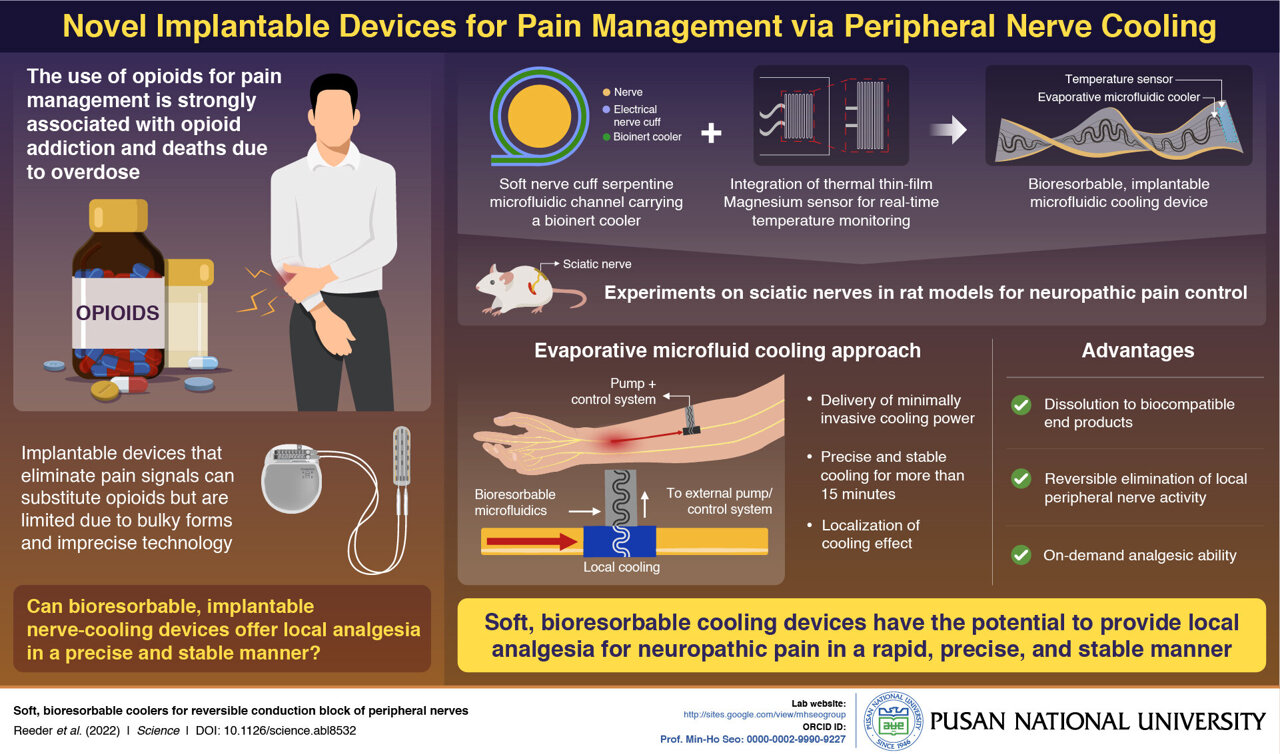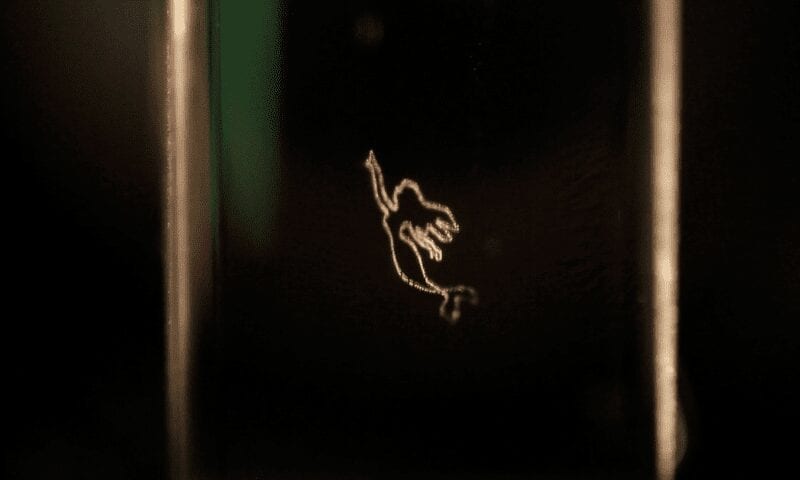
An alternative to opiods? Scientists at the University of Utah have found a compound that blocks pain by targeting a pathway not associated with opioids. Research in rodents indicates that the benefits continue long after the compound have cleared the body.
The findings were reported online in the February 20 issue of the Proceedings of the National Academy of Sciences.
The opioid crisis has reached epidemic proportions. Opioids is highly addictive and according to the Centers for Disease Control and Prevention, 91 Americans die every day from an opioid overdose. The medical community is in need of alternative therapies that do not rely on the opioid pathways to relieve pain.
“Nature has evolved molecules that are extremely sophisticated and can have unexpected applications,” begins Baldomero Olivera, professor in biology at the University of Utah. “We were interested in using venoms to understand different pathways in the nervous system.”
Conus regius, a small marine cone snail common to the Caribbean Sea, packs a venomous punch, capable of paralyzing and killing its prey.
In this study, the researchers found that a compound isolated from snail’s venom, Rg1A, acts on a pain pathway distinct from that targeted by opioid drugs. Using rodent models, the scientists showed that a9a10 nicotinic acetylcholine receptors (nAChR) functions as a pain pathway receptor and that RgIA4 is an effective compound to block this receptor. The pathway adds to a small number of nonopioid-based pathways that could be further developed to treat chronic pain.
Interestingly, the duration of the pain relief is long, greatly outlasting the presence of the compound in the animal’s system.
The compound works its way through the body in 4 hours, but the scientists found the beneficial effects lingered. “We found that the compound was still working 72 hours after the injection, still preventing pain,” said J. Michael McIntosh, professor of psychiatry at the University of Utah Health Sciences. The duration of the outcome may suggest that the snail compound has a restorative effect on some components of the nervous system.
“What is particularly exciting about these results is the aspect of prevention,” said McIntosh. “Once chronic pain has developed, it is difficult to treat. This compound offers a potential new pathway to prevent chronic pain from developing in the first place and also offers a new therapy to patients with established pain who have run out of options.”
The researchers will continue to the next step of pre-clinical testing to investigate the safety and effectiveness of a new drug therapy.
Testing a new nonopioid compound
Previous research had shown that RgIA was effective in rodents, but the scientists wanted to ensure they had a compound that would work in people. To do this, they used synthetic chemistry to engineer 20 analogs of the compound. In essence, the scientists started with a key (RgIA) that fits into a lock (the pain pathway receptor a9a10 nAChR). Using the key as a template, they developed new keys (analogs) with slightly different configurations.
The scientists found one key that best fit the lock: the analog RgIA4 tightly bound to the human receptor.
To test whether the compound relieved pain, the scientists administered it to rodents that were exposed to a chemotherapy drug that causes extreme cold sensitivity, as well as hypersensitivity to touch. “Interactions that are not normally painful, like sheets rubbing against the body or pants against the leg, becomes painful,” said McIntosh.
While the untreated rodents experienced pain after exposure to the chemotherapy drug, rodents given the compound did not experience pain. Nor did rodents that were genetically altered rodents to lack the pain pathway receptor. This work demonstrates that a9a10 nAChR acts as a pain pathway receptor, and that RgIA4 prevents the receptor from being activated.
Most pain medications available today work through a limited number of pathways and are not sufficient to alleviate chronic pain. “RgIA4 works by an entirely new pathway, which opens the door for new opportunities to treat pain,” said McIntosh. “We feel that drugs that work by this pathway may reduce burden of opioid use.”
Learn more: AN ALTERNATIVE TO OPIOIDS? COMPOUND FROM MARINE SNAIL IS POTENT PAIN RELIEVER
[osd_subscribe categories=’pain’ placeholder=’Email Address’ button_text=’Subscribe Now for any new posts on the topic “PAIN”‘]
Receive an email update when we add a new PAIN article.
The Latest on: Pain relief
[google_news title=”” keyword=”pain relief” num_posts=”10″ blurb_length=”0″ show_thumb=”left”]
via Google News
The Latest on: Pain relief
- ‘Don’t give up hope’: FIT Physical Therapy promotes healing for life with chronic pain programon April 27, 2024 at 8:03 am
Did you know that over 50 million people nationwide (about 20% of adults) suffer from chronic pain? America has a pain crisis, and it’s only getting worse. Enter the skilled and caring experts at FIT ...
- Mattresses for back pain — up to $2,600 off my top 7 picks from this weekend's saleson April 27, 2024 at 5:30 am
7. Awara Natural Hybrid Mattress: was from $1,299 | $649 at Awara Sleep Created using natural latex, our Awara Natural Hybrid Mattress review found this bed has a subtle contouring and strong support ...
- Opinion: Elon Musk gives Wall Street what it wants, but more pain could be around the corneron April 27, 2024 at 3:42 am
When asked for any details about the new model by a Wall Street analyst, Musk was terse, saying he had said all he was going to say on the new vehicle. He later tried to focus more attention on the ...
- Scientists Make Breakthrough in Chronic Pain Treatmenton April 26, 2024 at 7:53 am
Scientists have developed tiny robotic nerve "cuffs" to diagnose and treat neurological disorders. The flexible devices offer a safer, minimally invasive alternative to today's diagnostics and could ...
- Ovulation Pain and Relief Optionson April 26, 2024 at 6:55 am
Ovulation pain is mild discomfort mid-cycle. Severe pain from ovulation affects your quality of life. Learn what helps with this pain.
- Painful Truth Campaign encourages non-opioid solutions for pain reliefon April 25, 2024 at 11:21 am
The United States makes up around 4% of the world's population, but it consumes more than 80% of the world's opioids.
- Novaa Lab Reviews – Does It Work For Pain Relief or Fake Red Light Therapy Product?on April 25, 2024 at 1:31 am
NovaaLab stands as a beacon of hope for those seeking natural and effective solutions for pain relief and accelerated recovery. Founded by a visionary biohacker, NovaaLab has pioneered the use of red ...
- MVH uses nitrous oxide to bring patients quick pain reliefon April 24, 2024 at 10:39 am
As part of a federal spending bill recently signed by President Joe Biden, Massachusetts Sens. Elizabeth Warren and Ed Markey helped secure much-needed funds for Martha’ Hospital. The federal money ...
- Wellnee Pain Relief Patch Reviews (2024): Scam or Legit?on April 22, 2024 at 9:27 am
On a regular Saturday morning, I was getting ready for my weekly basketball game, something I always looked forward to. But as I got ready and took some practice shots, a sudden pain shot through my ...
via Bing News










